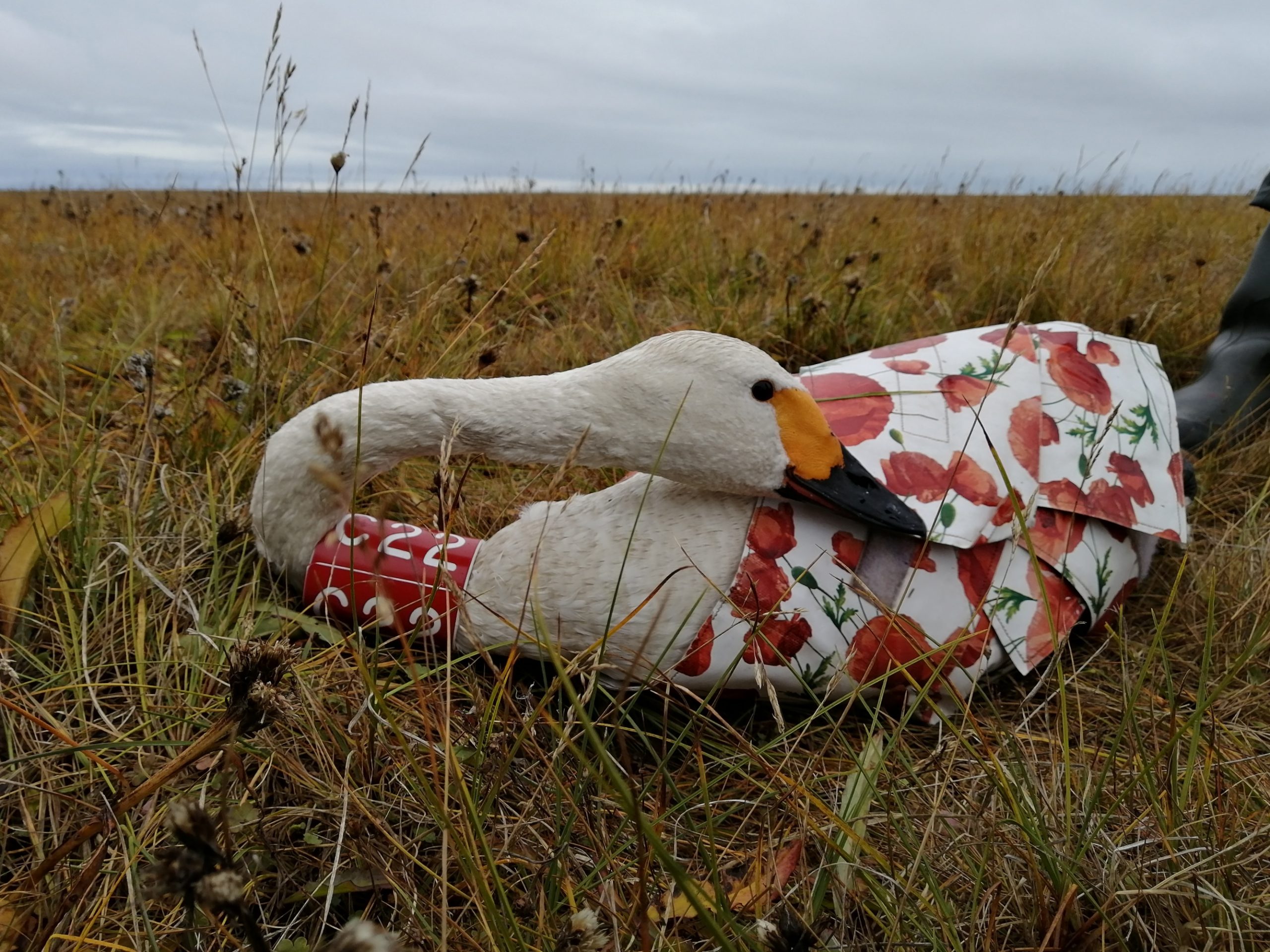
A Bewick’s Swan with red neck collar © Daria Barykina
The project aims to estimate the survival of adult and juvenile Bewick’s Swans (in some literature considered as Eurasian subspecies of Tundra Swan and considered as separate species in Russia) as depending on marking method. West Pacific Flyway of the Bewick’s swan connects tundra between Indigirka River in the West (150o E) and Koluchin Bay in the East (175o W) to the wintering grounds in Japan.
In 2016-2020, the research team captured and marked 234 swans: 155 adults and 64 offspring. Marking site is located in the Chaun River delta, Chukotka, Russia (68o N, 170o E). Among these offsprings, 23 birds were equipped with Ornitela GPS/GSM trackers (white neck collars) and red leg rings and 36 birds were equipped with just red leg rings. Among adults, 118 birds were marked with trackers and red leg rings, 23 birds were marked with red neck collars (for newly captured birds) and 26 birds were marked with red leg bands (including several recaptured birds with trackers, from whom trackers were taken down .
Eighty-one birds were resighted out of 181 birds marked in 2016-2019. It is expected that Japanese colleagues and birding clubs to continue reporting of marked swans in following winters. Survival and resighting probabilities will be estimated for different age groups and different mark types. To avoid bias from known swan fates obtained by tracking, only visual observations at either wintering grounds (Japan) or breeding grounds (Chaun Delta) will be used for the demographic estimations.
Plastic trackers started to fall off the swans at their third year, so some birds are now carrying only leg rings. Without the neck collars (trackers and red neck collars), it is expected resightings of swans with just leg rings might be underestimated comparing to swans, as leg rings are less visible to observers. Here we call for Japanese birders to pay attention to leg rings of swans.
The project was supported by GPS/GSM trackers via partnership with Research Center for Eco-Environmental Sciences, Chinese Academy of Sciences (Prof. Cao Lei) and colour plastic rings and collars were kindly donated by US Geological Service (Drs Craig Ely and Sarah Sonstagen).
Article prepared by Dr. Diana Solovyeva, Institute of Biological Problems of the North FEB RAS, Magadan, and Asian Bewick’s Swan Coordinator




